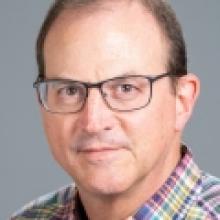
Jonathan Bray, Ph.D., P.E., NAE is the Faculty Chair in Earthquake Engineering Excellence at the University of California, Berkeley. Dr. Bray is a registered professional civil engineer and has served as a consultant on important engineering projects and peer review panels. He has authored more than 400 research
publications on topics that include liquefaction and its effects on structures, seismic performance of earth structures, earthquake ground motions, and earthquake fault rupture propagation. He created and led the Geotechnical Extreme Events Reconnaissance (GEER) Association. Dr. Bray is a member of the US National Academy of Engineering and has received several honors, including the H. Bolton Seed Medal, Terzaghi Award, Ishihara Lecture, Peck Award, Joyner Lecture, Middlebrooks Award, Huber Research Prize, Packard Foundation Fellowship, and NSF Presidential Young Investigator Award.
Advancing hazard-resistant design demands an understanding of what happens when a disaster occurs. Documenting and sharing the key lessons learned from extreme events around the world contributes significantly to advancing research and practice in hazards engineering. Unanticipated observations from major events often define new research directions. As an example, the recent studies of the liquefaction of fine-grained soil have been largely motivated by observations in post-earthquake reconnaissance efforts.
Field observations are particularly important in earthquake engineering because it is difficult to replicate in the laboratory the dynamic response of soil deposits built by nature over thousands of years. Detailed mapping and surveying of damaged and undamaged areas provides the data for the well-documented case histories that drive the development of many of our design procedures.
Data must be collected quickly and completely before it is lost. Systematic collection of quantitative data is required. Technologies, such as LiDAR, Structure-from-Motion (SfM), and UAVs, can capture ground deformation and its effects. Important advancements are possible through research of extreme events if their effects are captured and shared effectively. Thus, engineers should be ready to investigate the next important extreme event.
